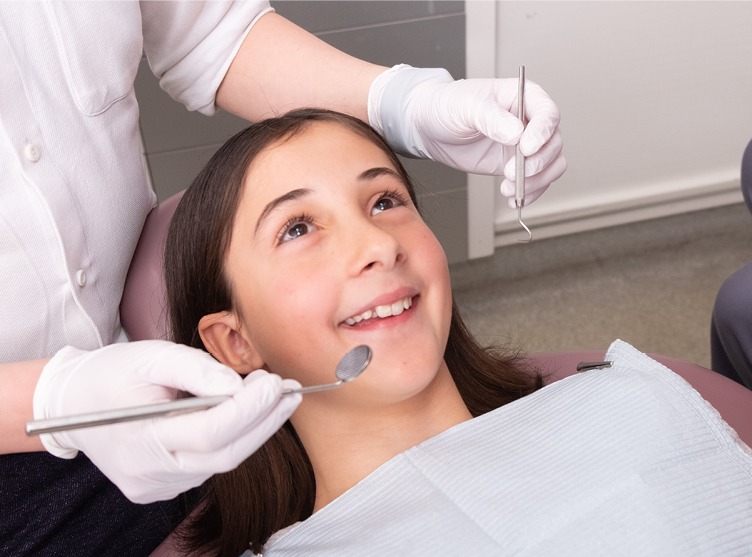Legacy Orthodontics for Beginners
Table of Contents3 Simple Techniques For Legacy OrthodonticsLegacy Orthodontics Can Be Fun For AnyoneThe Ultimate Guide To Legacy Orthodontics5 Simple Techniques For Legacy OrthodonticsExamine This Report on Legacy Orthodontics
At Advanced Orthodontics, we supply individuals with a holistic therapy experience. On top of that, we provide flexible therapy schedules, versatile settlement choices and an enjoyable, pleasurable experience. clear braces. Telephone call ( 480) 357-4900 today to find out more and schedule a consultation.An orthodontist is a dental professional trained to detect, avoid, and deal with teeth and jaw irregularities. Orthodontists function with individuals of all ages, from youngsters to adults.
Malocclusion, or misaligned teeth, can bring about oral issues, consisting of dental cavity, gum tissue condition, and hard or unpleasant eating. But not everyone is born with straight teeth. If you have a negative bite or large areas between your teeth, you may intend to consult a dentist specializing in orthodontic treatment.
A Biased View of Legacy Orthodontics
( Image Credit Report: DigitalVision/Getty Images) Orthodontists utilize repaired and detachable oral tools, like braces, retainers, and bands, to transform the position of teeth in your mouth. Orthodontic therapy is for dental irregularities, including: Uneven teethBite troubles, like an overbite or an underbiteCrowded teeth or teeth that are as well much apartJaw misalignmentThe goal of orthodontic therapy is to improve your bite.
A healthy bite ensures you can consume, eat, and speak appropriately. While you may consider orthodontists as primarily for youngsters or young adults who require braces, they can correct oral problems at any age. Orthodontists go to college, oral college, and orthodontic school. After graduation, they invest 2 or 3 years in an orthodontic residency program.
, however not all dental professionals are orthodontists. They focus on two areas: How to effectively and securely move teeth Just how to appropriately direct advancement in the teeth, jaw, and faceOnce an orthodontist has actually finished training, they have the alternative to come to be board accredited.
The 5-Second Trick For Legacy Orthodontics
Imbalance, or malocclusion, is one of the most usual factor people see an orthodontist. It is genetic and is the result of size differences between the upper and lower jaw or between the jaw and teeth. Malocclusion brings about tooth congestion, a misshapen jaw, or uneven bite patterns. Malocclusion is normally treated with: Your orthodontist connects steel, ceramic, or plastic square bonds to your teeth.
If you have only minor malocclusion, you might have the ability to use clear dental braces, called aligners, rather than standard braces (https://www.giantbomb.com/profile/legacyortho/). Some individuals require a headwear to aid move teeth right into line with pressure from outside the mouth. After dental braces or aligners, you'll need to put on a retainer. A retainer is a custom gadget that maintains your teeth in position.
They can produce added room in the mouth without having to pull teeth. Orthodontists use cords, medical screws, or plates to support your jaw bone.
You may require to see an orthodontist if you have: Crowding or not sufficient room for every one of your teethOverbite, when your read this article top teeth come over your base teethUnderbite, when your base teeth are too much forwardSpacing or concerns with gapsCrossbite, which is when your top teeth fit behind your base teeth when your mouth is closedOpen bite or a vertical void between your front bottom and upper teethMisplaced midline, when the center of your bottom and upper teeth do not line up Remedying an oral malocclusion can: Make biting, eating, and talking easierImprove the balance of our face and your general appearanceEase pain from temporomandibular joint conditionsDifferent your teeth and make them much easier to cleanse, helping avoid tooth degeneration or cavities It's typically a dentist who initially notices misaligned teeth during a regular exam.
All about Legacy Orthodontics

Throughout your very first orthodontic assessment, you'll likely have: An oral examPhotos taken of your face and smileDental X-raysPanoramic (360 level) X-rays of your face and headImpressions to create mold and mildews of your teethThese tests will assist your orthodontist recognize how to proceed with your treatment. clear braces. An orthodontist is a dental professional that's had training to treat your teeth and jaw
Orthodontists may perform surgery, exams,X-rays,and more to aid you achieve a much more comfy, healthier smile. An orthodontist is concentrated on your bite, so something like a broken tooth would be taken care of by a dentist. Orthodontists are dental practitioners however not all dental practitioners are orthodontists. Orthodontists are concentrated on your bite, or the method your teeth fit together, and the straightness of your teeth.
Ever before asked yourself exactly how stars always seem to have completely aligned teeth? The response frequently hinges on the skilled hands of an orthodontist. Yet what precisely does an orthodontist do? Orthodontists are dental professionals who concentrate on fixing abnormalities in the teeth and jaws. Their competence exceeds just producing a gorgeous smile; it encompasses boosting your total dental wellness and function.
The 30-Second Trick For Legacy Orthodontics

While braces are the most generally acknowledged orthodontic therapy, orthodontists have a diverse toolkit at their disposal. The particular approach picked depends upon the seriousness of the instance, the client's age, and individual choices. These tried-and-true braces make use of a system of braces bound to the teeth and linked by cables.
These detachable trays are tailor-made to gradually move the teeth's setting. In instances of narrow jaws, palatal expanders can be used to produce space for appropriate tooth positioning.